As we all know, using the right tool for your job will significantly increase your productivity, efficiency, and quality of artistry.
In a woodworking workshop, a table saw is one of the most pivotal tools.
If you are just starting out or looking at upgrading your existing table saw, this article will introduce you to the six different table-saw types available on the market.
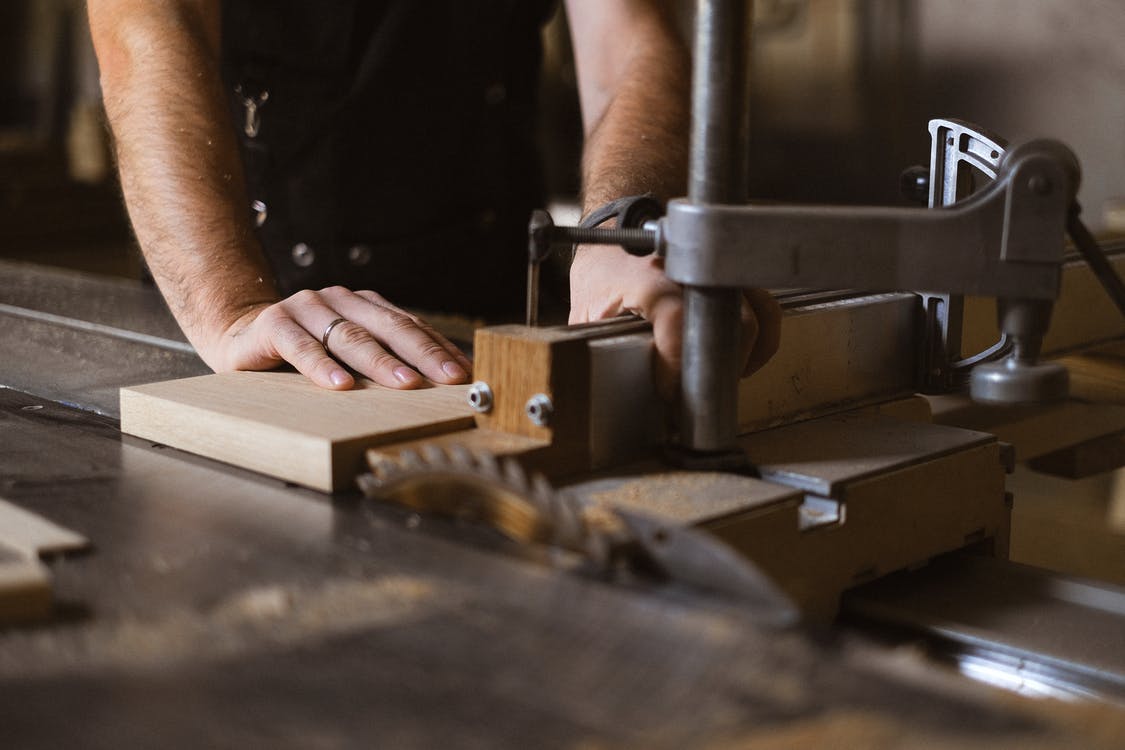
Type of Table Saws
Table saws are broadly separated into two categories, stationary and portable. Each table saw type has its unique features, advantages, and disadvantages, making them either less or more suitable for your needs. Below is a list of the six types of table saws we will discuss to assist you in making your decision.
1. Contractor
2. Hybrid
3. Cabinet
4. Portable and Jobsite
5. Mini
6. Benchtop
Saw Types | Best For |
|---|---|
Contractor | Basic furniture making, cabinetry projects, carpentry, home shop, and trim work |
Hybrid | Woodworking jobs of all sizes and jobs that require precise cuts |
Cabinet | Large woodwork construction projects, high-quality woodworking, and furniture making |
Portable and Jobsite | Medium to large furniture and building projects, construction, carpentry, home improvements |
Mini | Small woodwork cutting where other table saws cannot be used |
Benchtop | Cutting off smaller, soft boards |
Contractor
Contractor table saws were initially designed to be portable enough to be carried from one job site to another. They have a simple design and are affordable in price. The blade is positioned at the back and has the facility to collect dust.
The contractor saw a motor hang off the back of the saw. The trunnions, arbor assembly, and gearings are of a lower quality than those found on more expensive machines.
Contractor saws are open-based saws that have larger motors and can perform heavier tasks. Over the last few years, with the advancement of technology, the contractor saw was overshadowed by more powerful, smaller portable saws.
Advantages
- Contractor saws can be used for small, medium, and large home projects.
- These saws are used in professional carpentry and high-level decorative work.
- Contractor saws are more durable and longer-lasting than bench-top saws.
Disadvantages
- Contractor saws are heavier than your bench-top saws.
- These saws are outdated with the advancement of new technology.
- Contractor saws are less than your stationary table saw.
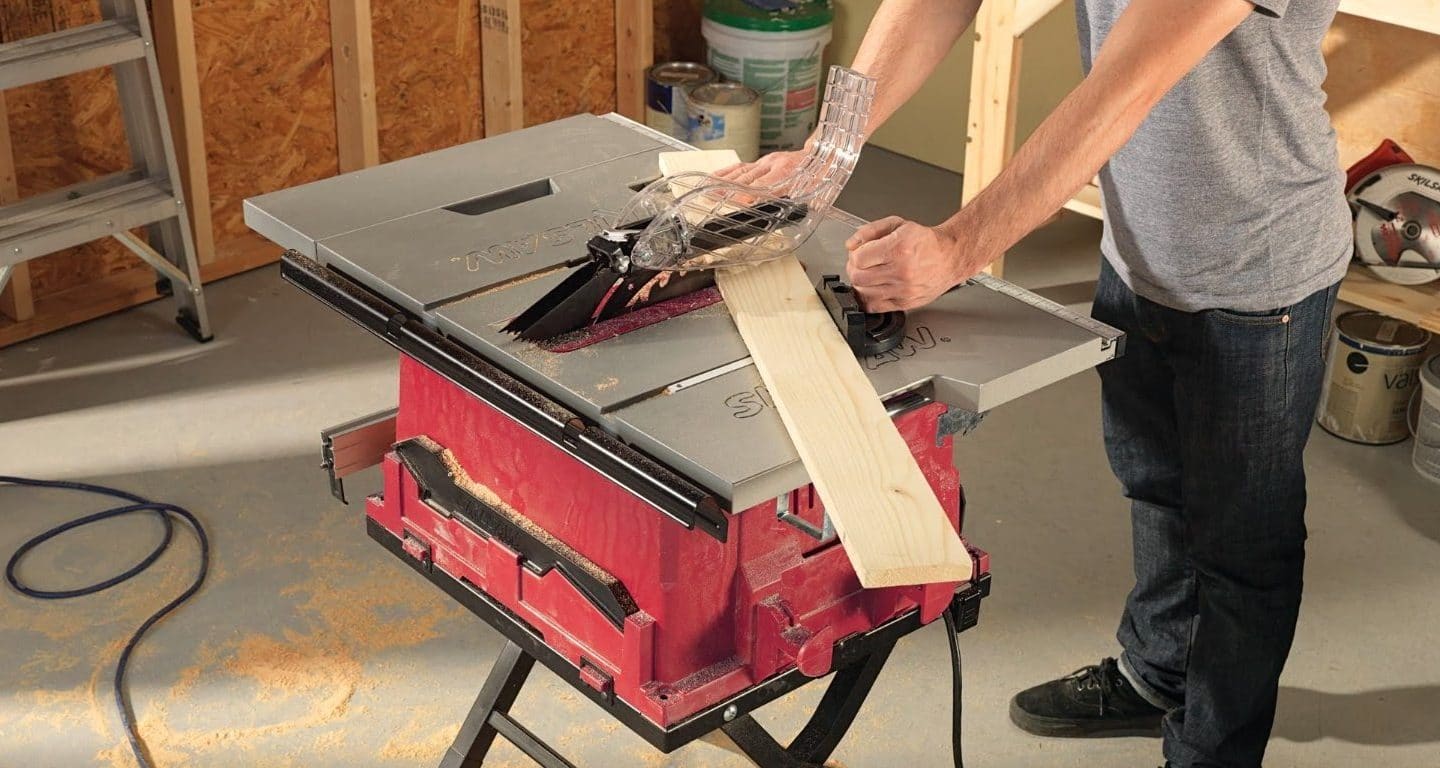
Photo credit: wisepick.org
Best For:
The contractor table saws make it versatile for basic furniture making, cabinetry projects, carpentry, home shop, and trim work. These table saws have long been the choice of professional workers, hobbyists, small shops, and homeowners. Nowadays, most contractor table saws come with a fence system for your safety.
Hybrid
A hybrid table saw encapsulates the features of a professional cabinet table saw. It bridges that pricing gap between the cabinet and contractor table saw offers you the best of both worlds, making it affordable for hobbyists. Some hybrid table saws have a cabinet-style base, whereas others may have a smaller cabinet supported by legs.
The motor resides inside the cabinet. The size and power of a hybrid table saw lie between that of a cabinet and contractor table saw. They have better trunnions and arbor bearings and more than often have better gears than most contractor saws.
Advantages
- Almost as powerful as a cabinet table saw but less expensive
- They have long-term reliability and low vibration belt-drive motors, which results in much higher accuracy cuts.
- Hybrid table saws are lighter than the cabinet table saw, as it is a scaled-down version of the cabinet table saw.
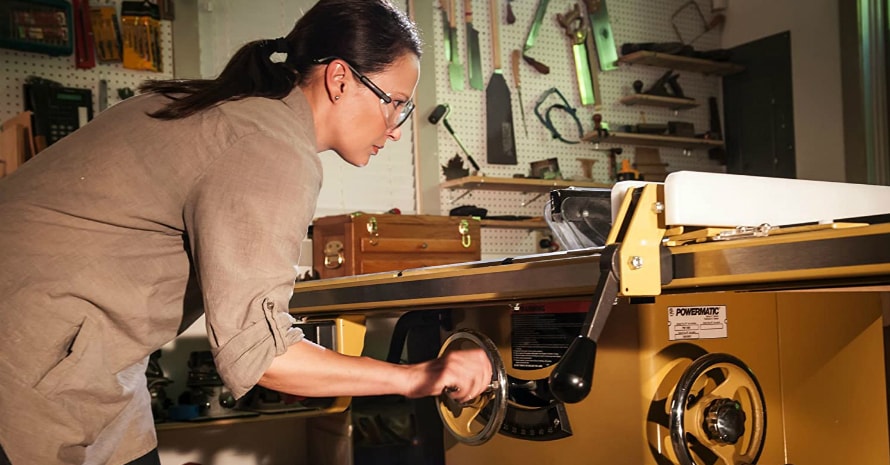
Photo credit: electrogardentools.com
Disadvantages
- It has a smaller rip capacity than a cabinet table saw.
- Expensive, although it is cheaper than a cabinet saw.
- Hybrid table saws are heavier than contractor table saws.
Best For:
The hybrid table saw can be used for woodworking jobs of all sizes and shapes. We can use it for construction jobs that require much more precise and detailed cuts.
The hybrid table saw can also be used for large home projects and DIYs. Almost anyone can use this table saw, including furniture makers, woodworkers, professionals, and hobbyists.
Cabinet
Cabinet saw types are at the high end of the spectrum for table saws. They are the best of all table saws. Cabinet saw types come with a fully enclosed cabinet base. They have been designed for durability and performance.
Cabinet saw types are built from higher quality material and have more solemn arbor assemblies, gears, and trunnions. They also have much heavier motors than contractor saws. As a result, they have little vibration, ensuring accurate cuts and puts less strain on the operator.
Although they have a simple design, cabinet saws are sophisticated machines capable of high volume, precision work. Cabinet saws have been designed to cut through some of the most challenging and thickest wood and run the entire day long.
Advantages
- Suitable for any woodworking project.
- They have the largest rip capacity and the highest accuracy of cuts.
- The cabinet table saw is the most powerful of all table saws.
Disadvantages
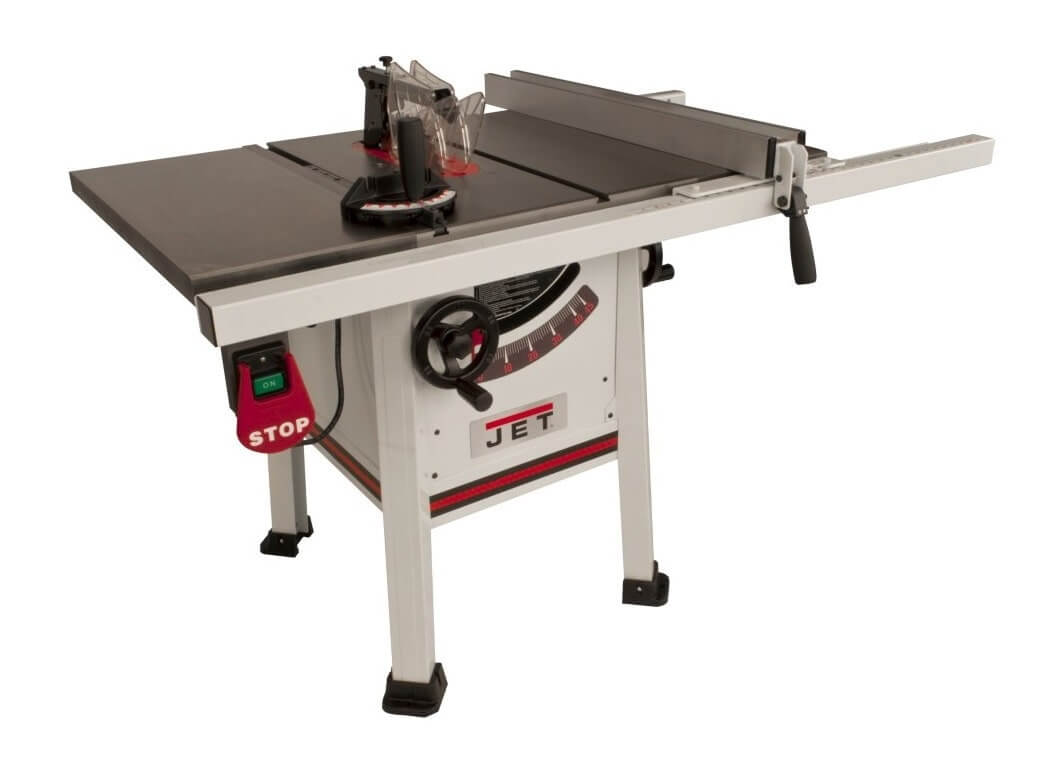
Photo credit: bestcabinettablesaw.com
- The most expensive table saw.
- Because of their large size, they require a lot of floor space.
- Cabinet saw types are the heaviest of all saws and are not portables.
Best For:
Cabinet saws are best used for larger woodwork construction projects, high-quality woodworking, furniture making of all sizes, cutting boards to an extent, and cuts that require precision and accuracy. Cabinet saws are best suited for professional woodworkers.
Portable and Jobsite
Portable and Jobsite table saws are designed to be easily transportable. They perform similar functions as larger table saws, but on a smaller scale. The motor is lightweight, which allows for portability, and because of this, they lack the power of other types of table saws.
Portable tabletop saws are sometimes made with aluminum tops instead of steel. It’s done to reduce the table’s weight, resulting in the saw feeling unstable and producing more vibrations. Jobsite table saws are built more ruggedly, and the motors, gears, and cases withstand the abuse from construction sites.
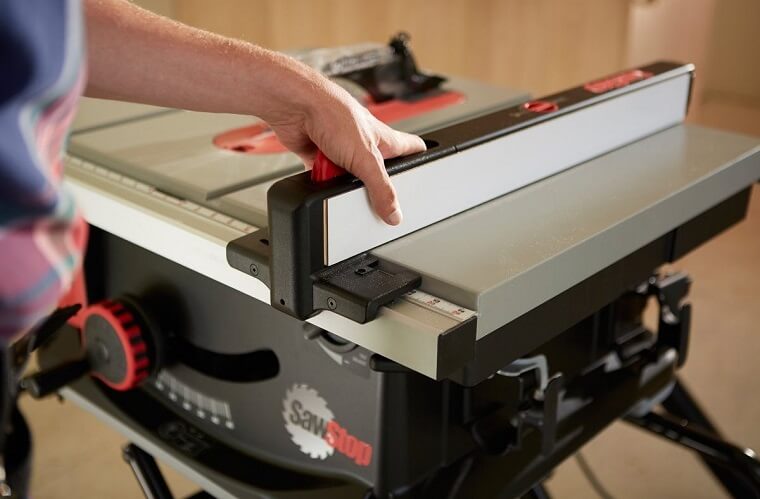
Photo credit: toolsfirst.com
Advantages
- They combine the versatility of stationary and portable saws.
- Jobsite saws are powerful enough to cut plastics, metals, wood, and lumber.
- Their heavy-duty construction and ruggedness allow for everyday usage.
Disadvantages
- Jobsite table saws are the most expensive of the portable options.
- They do not have enough power to rip through thick hardwood.
- They are not designed for accuracy cuts that are required of fine woodwork.
Best For:
Portable and jobsite saws are used in medium to large furniture and building projects, construction, professional carpentry, heavy-duty home improvement, and DIYers. They are exceptional for carpenters and other woodworkers that spend a lot of time on-site jobs.
Mini
A mini table saw type is the smallest of all other saws. It has a blade diameter of 100 mm (4 inches). They are small and lightweight, which makes them portable. They take up little desk space and are much safer to use when working with small wood pieces. The mini table saw uses a narrower blade than ordinary table saws, resulting in less material loss.
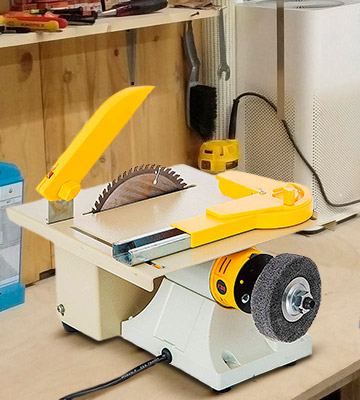
Photo credit: bestadvisor.com
Advantages
- Mini table saws are perfect for beginners.
- They are lightweight and portable.
- It is easy to set up and operate.
Disadvantages
- It can be used only for minor projects.
- The rip capacity is minimal.
Best For:
The mini table saw is mainly used for small woodwork cutting where other saws are too big and cumbersome to work with. Model makers and hobbyists primarily use them.
Benchtop
A benchtop table saw is a lightweight table saw designed to be operated on any table or surface. They mostly have a direct drive motor, meaning that the blade is directly driven by the engine and does not have any v-belts. As they are designed to be light and compact, the parts are generally made up of aluminum, plastic, and steel.
The benchtop table saw is often noticeably light and can be moved around by a single operator. The benchtop saw types are the least expensive and have the least capabilities compared to other benchtop saws.
Advantages
- Benchtop saw types are the easiest to set up and use.
- They are lightweight and portable.
- It is more powerful than a mini table saw.
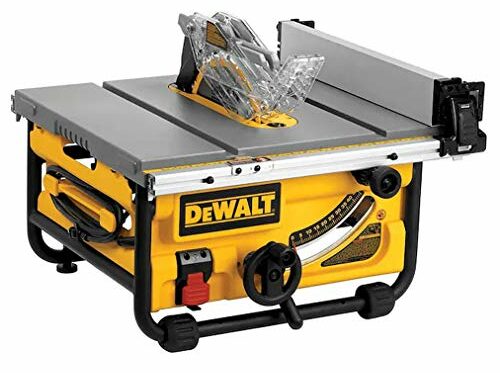
Photo credit: thedailygardener.com
Disadvantages
- Small rip capacity as the top of a benchtop table saw is narrower than the cabinet and contractor saws.
- It has a shorter rip fence, making it harder to make a straight, clean cut when ripping.
- Benchtop saws have increased vibration. Because of the weight being so low, this contributes to the higher vibration on benchtop saws.
Best For:
Benchtop saws are best suited to cut smaller and soft boards. They are most suitable for smaller projects. Homeowners and DIYers mostly use benchtop saws and hobbyists starting in the woodworking space.
Factors to Consider When Choosing a Table Saw
There are many factors to consider when looking at purchasing or even upgrading your table saw. These factors can include, but are not limited to, motor size, electrical requirements, dust collection, saw blade size, extension tables, and security features. Let us look at the following four factors that could affect your decision on which table saw type to get.
Base Types
One of the most important factors to consider when choosing a table saw is finding a balance between mobility, accuracy, and power. If you move around a lot, then the table saw you would want looks vastly different from a woodworking business that cuts large wood sheets to size.
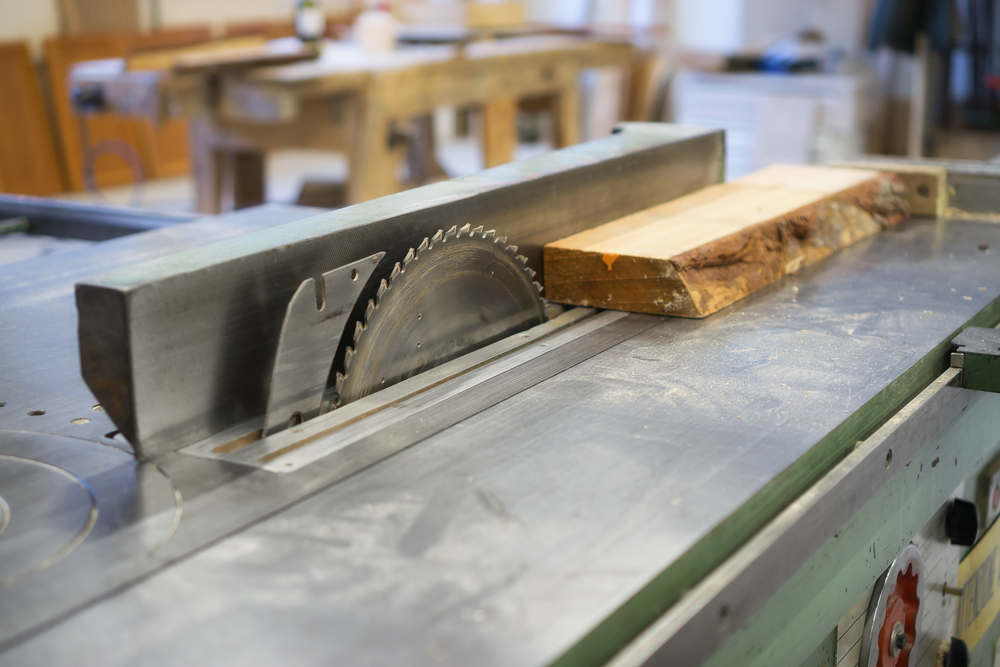
Photo credit: diyhouze.com
You have a choice between portable, hybrid, or stationary table saws. Stationary table saws such as cabinet saws usually are used for serious woodworkers.
These saws are typically fixed in position and do not get moved around. If it must be moved, then you will require more than one person to move the table saw. These machines can get massive once you extend the tables.
Project Size
Another essential factor to consider when choosing a table saw is the size of your projects. The size of your tasks could range from once off to small, medium, or large. For DIY projects, you’d require decorative trim work, a portable or smaller table saw.
These are the least expensive and would suffice for your requirements. For larger, more serious projects such as furniture building, accuracy and precision cuts, construction, or large-scale work, you will require a more powerful larger table saw.
Time Spent on Woodworking
If you spend a few hours now and then or rack up a few hours a week on your woodwork on models, projects, or cabinetry, then a portable table saw would suit your requirements. Wanting a cabinet to fulfill the above might not be practical because of its cost and space requirements.
If you are a professional, have your woodworking shop, spend hours on projects, and build cabinets, then a cabinet table saw would be better suited for your requirements.
Low-end contractor table saws may hinder your business by slowing you down, whereas high-end cabinet table saws might be over the top for your business. Hybrid table saws offer the right balance for the determined hobbyists and will even prove suitable for small-scale professional operations.
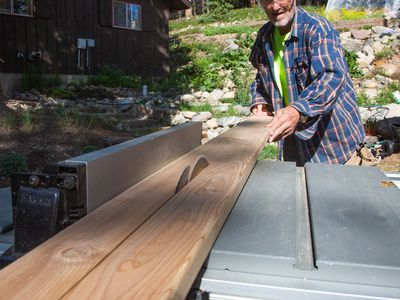
Photo credit: thespruce.com
Table Saw Features
Now that you have settled on the table saw that suits your needs, you will need to look at its features. Features will play an essential factor when choosing your specific table saw.
Some of the most common features to consider are:
- Knowing what you will cut will assist you in selecting the right power.
- If you’re going to use the table-saw indoors, check to see if you can add a dust collector to the saw.
- Another feature is beveled capabilities to make angled cuts.
- Can the blade be changed easily?
- Does the table saw come with a miter gauge that’s parallel to the blade
- If you are concerned about your safety, consider a table saw with an automatic blade brake.
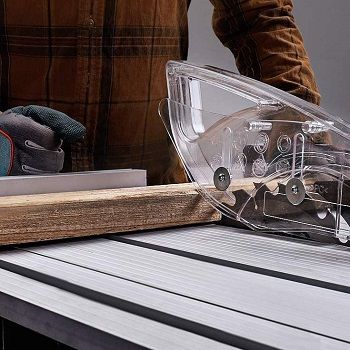
Photo credit: tablesawsguy.com
Conclusion
We have outlined six different table saws and their advantages, disadvantages, what they are best used for, and listed factors to look at when choosing a table saw.
These table saws fall into the following two categories, portable and stationary. Portable table saws are the mini, benchtop, mobile, and Jobsite saws. At the same time, stationary table saws are the contractor, hybrid, and cabinet saws.
People Also Ask
Choosing the right table saw type for you can be a difficult decision. However, you might still have questions before you can fully decide on the right table saw for your needs. Here are some questions to help you in your decision-making.
Can Any Table Saw Blade Be Used on Any Table Saw?
Some table saws take larger blades and some smaller blades. You can use a shorter blade on a larger table saw, although this is not recommended as you will lose the cutting depth. Most table saws use a 10” blade that can be used across table saws except for the mini saw which takes a much smaller blade.
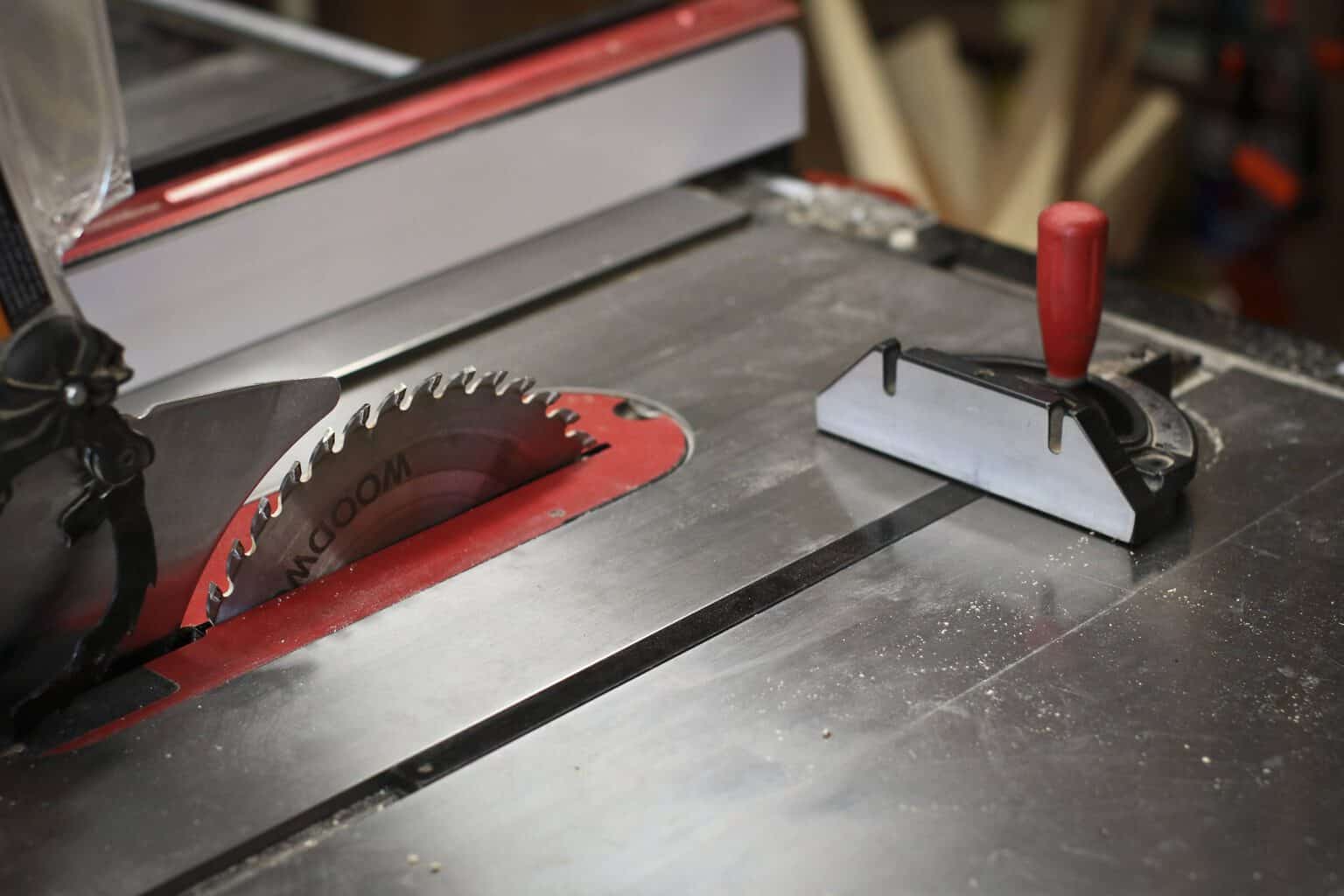
Photo credit: sawshub.com
What is the Best Table Saw Type For Home Use?
The ideal table saw type for home use would be a portable table saw. As the name implies, it is portable and easy to move around. They are less bulky and lightweight. Portable table saws occupy less space and are most suited for small jobs.
What is a Good Table Saw Type For Beginners?
A good table saw type for beginners would be a benchtop saw. They are affordable in price and have lightweight construction for ease of use. They are tailored for the beginners, as well as the hobbyist and DIYers.
Benchtop saws offer a limited but adequate rip capacity for most of your tasks. They are suitable for cutting pine or soft materials. These types are perfect for the beginner, and as your skill levels improve, you can later progress to bigger models.
